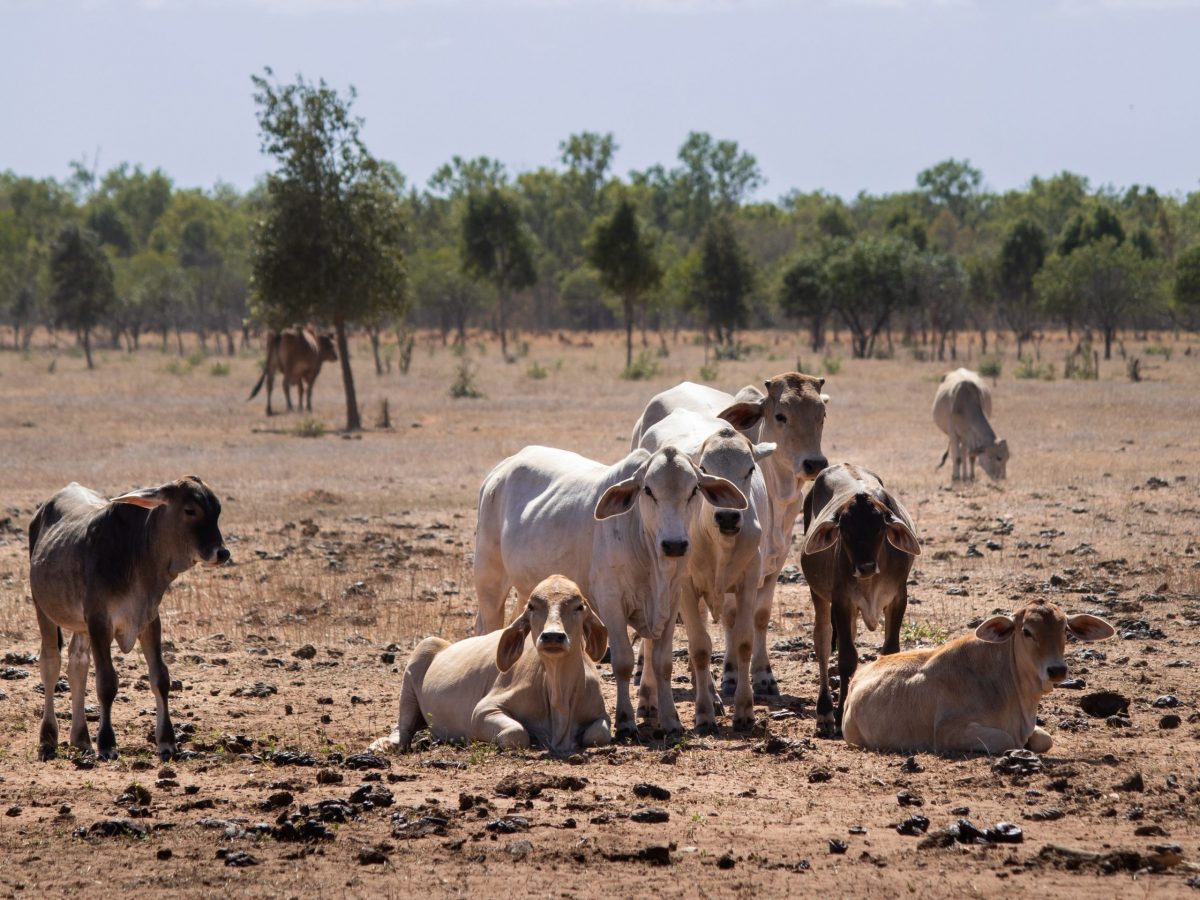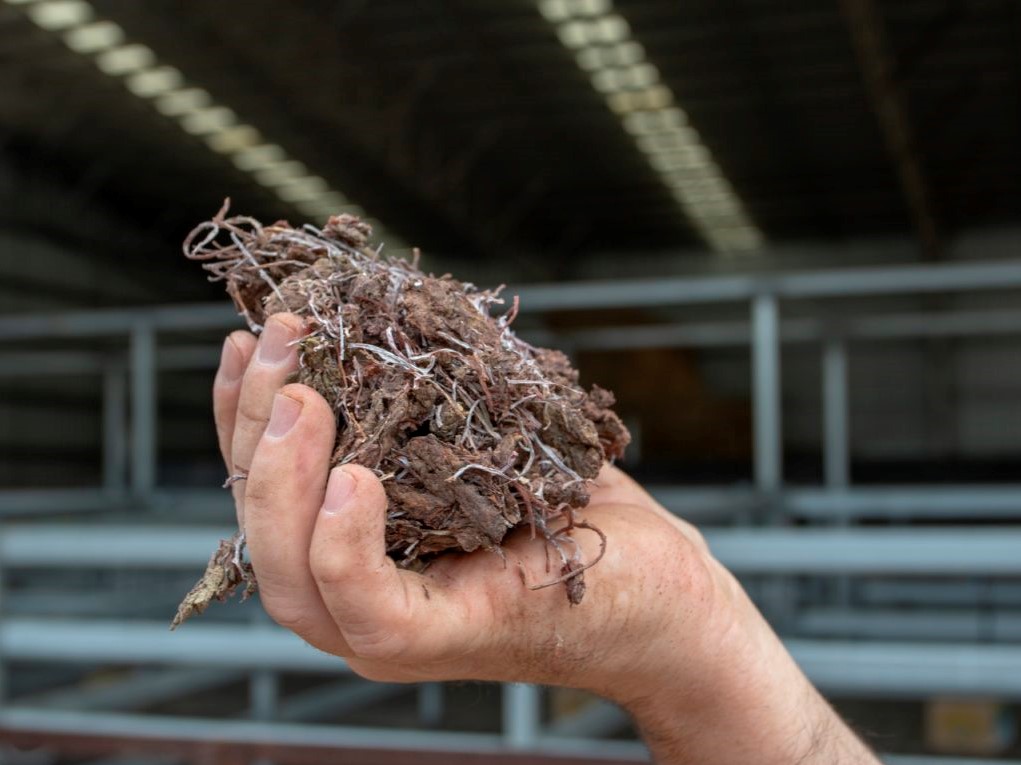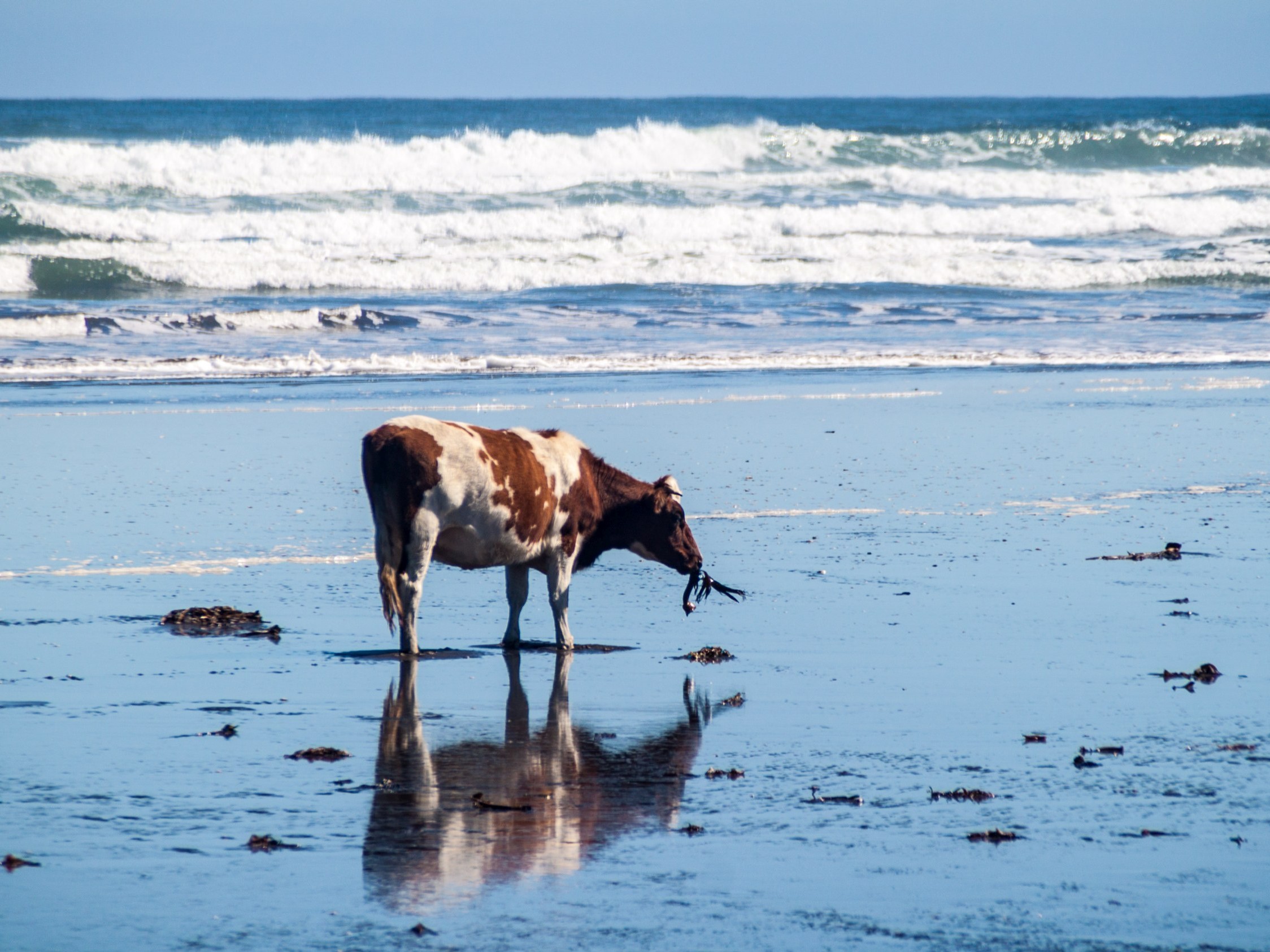Methane from enteric fermentation in the digestive systems of ruminants is a major contributor to livestock greenhouse gas emissions, across Australia and worldwide.
Feed additives and supplements can reduce harmful methane emissions from ruminant livestock significantly. But while precision feeding is a global trend, existing feed additives and supplements are suitable only to delivery in controlled daily feeding environments.
To date, solutions for supplementing ruminant feed in grazing and pastoral settings are limited. A gap in delivery technology prevents feed supplements from reaching their maximum potential in reducing methane emissions.
The ‘Ultra-long delivery system of methane reduction agent for ruminants’ (‘Methane reduction supplements’) project, a collaboration between Agrisma and UNSW Sydney, aims to close this gap.
The project team is looking to develop an encapsulation method that enables effective slow-release delivery of methane-reducing additives to ruminants in the field.

Australia’s red-meat industry has set a target to be carbon-neutral by 2050. Credit: Shutterstock
The challenge: Cutting emissions in free-range ruminants
“Australia’s red meat industry has set a target to be carbon-neutral by 2030. If the industry is to meet its objective, a major reduction in ruminant emissions of methane – a potent greenhouse gas –will be crucial,” says Dr Alex Soeriyadi, serial entrepreneur and founder-CSO of Sydney-based start-up Agrisma.
“Around 80 per cent of Australia’s beef cattle herd is pasture-fed, with livestock sometimes foraging over wide areas,” adds Marcus Nixon, Agrisma founder and CEO.
“Thus, finding a safe, reliable, cost-effective way to deliver methane-reducing feed additives to ruminants ‘in the field’ is a high priority for the industry.”
The goal: A POC for new encapsulation technology for slow-release feed additives
Agrisma is keen to develop a proof-of-concept for a novel encapsulation technology for feed additives that can be applied in the field to reduce methane production in free-ranging ruminants, says Dr Soeriyadi.
Methane is a greenhouse gas that is released into the atmosphere from the digestive tracts of ruminant animals.
“Cattle, sheep, and goats have very diverse gut microbes that are involved in anaerobic fermentation during digestion. The resulting ‘enteric methane’ contributes up to 30 per cent of methane production – and its release into the atmosphere results in heat gains on Earth that are 80 times greater than those produced by the release of carbon dioxide gas,” Dr Soeriyadi explains.
Currently, various feed supplements including 3-NOP (Bovaer®), natural extracts (chitosan, garlic, etc), and Asparagopsis seaweed, being developed and soon to be available commercially – can reduce methane emissions from ruminant livestock by between 30 and 90 per cent, with increased ruminant productivity and no observed adverse effects on animals’ health or product quality.
“However, these supplements can be given only in feedlot settings, not to the pasture-fed ruminants that make up the bulk of Australia’s beef cattle industry – and most of the world’s ruminant livestock,” Marcus Nixon says.
Pasture-fed ruminants graze freely over very large land areas, he notes. “This raises the need for a long-term dietary approach that requires human intervention only a few times a year – a system capable of ultra-long release of active ingredients to pasture-fed ruminants.”
By working with encapsulation experts within UNSW Sydney’s School of Chemical Engineering, Agrisma hopes to develop a commercially viable system that can be delivered to pasture-fed ruminants two or three times a year, releasing methane-reducing feed additives slowly over periods of up to six months.
The project is an initial step in the development of a commercial product.

Free-ranging cattle on a station near Katherine, Northern Territory. Credit: Shutterstock
The research
The year-long project, titled ‘Ultra-long delivery system of methane reduction agent for ruminants’ (P1-020) is designed in three stages.
- In Stage 1, the project team will create nanoparticles that are safe to use and able to successfully encapsulate key active ingredients.
- In Stage 2, the team will investigate the stability and efficiency of the encapsulation.
- In Stage 3, it will monitor the properties of the resulting long-term delivery system – one designed to release active ingredients into ruminants in a steady, sustained fashion over periods of up to six months.
Scientia Associate Professor Rona Chandrawati heads the project team. A/Prof. Chandrawati has expertise in nanoparticle synthesis and formulation, small-molecule encapsulation and delivery systems, controlled delivery systems and long-term delivery systems.
Her laboratory at UNSW is well equipped for this project, with specialised equipment including nanoparticle synthesis reactors, nanoparticle characterisation systems, and facilities for molecule quantification and analysis.
“The technology we’re developing in this project will focus on the ‘carrier’ rather than the ‘actives’,” says A/Prof. Chandrawati. “This will allow Agrisma’s project to have a broader impact as a platform delivery system technology for a wide range of applications.
“We focus on biodegradable polymers as building blocks for the carrier. These materials have already been approved for human drug delivery or classified as ‘GRAS’ – generally recognised as safe – by the US Food and Drug Administration. This reduces Agrisma’s risk in applying the platform technology for commercialisation,” A/Prof. Chandrawati says.
“The ingredients will be embedded within a polymeric matrix to improve the stability of the system and to enable their controlled release over an extended period.”
So far, results are promising: “Since the project started in November, we’ve successfully developed polymeric nanoparticles that encapsulate and stabilise the active ingredients,” A/Prof. Chandrawati says.
“We have also demonstrated that the encapsulated active ingredients can be released from the polymer carriers.”
Once the project team develops a viable way to deliver active ingredients to ruminants ultra-long-term, Agrisma will file a provisional patent on the system.

Raw, dried Asparagopsis seaweed before being refined into a feed supplement. Credit: CSIRO
Product development – next steps
Successful investigation and validation of the research team’s proof-of-concept will lead to a product prototype that will be ready for further testing and future commercialisation by the project’s conclusion date.
“Following the laboratory design studies, Agrisma plans to undertake further non-clinical testing, followed by a small-scale trial of our ultra-long delivery system on livestock,” says Dr Soeriyadi.
“Initial efficacy and safety profiles will need to be characterised through extensive animal studies of pharmacodynamics (i.e. efficacy and toxicity) and pharmacokinetics (i.e. biodistribution) to support the design and optimisation of the delivery system.
“Once this phase is successfully completed, we’ll continue to develop and trial the product, moving into larger-scale studies and reviews.
“We expect the product development phase to run from three to five years.”
Real-world impact
The potential impact of the research is immense, says Marcus Nixon.
“Cutting methane emission is one of the fastest ways to slow the rate of global warming. Doing so while improving the productivity is an immense opportunity for the cattle industry, in Australia and abroad,” he says.
Lead image: Cows eating seaweed is not a new thing; they do it naturally, as evidenced by this cow on Chiloe beach in Chile. Credit: Shutterstock


